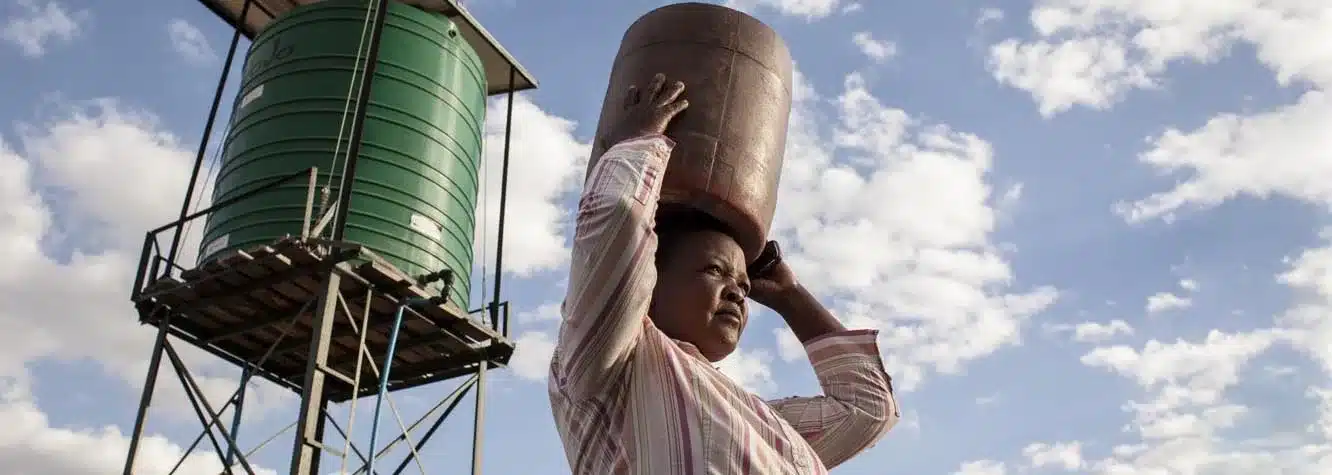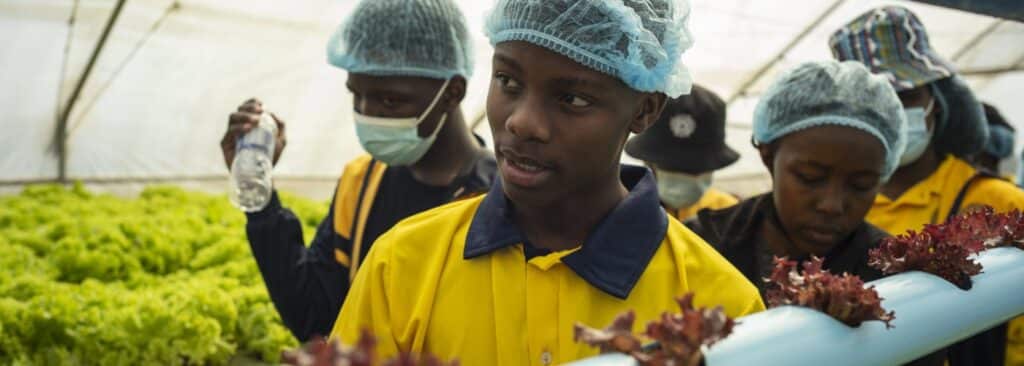Investments in water must tackle the threats of scarcity, quality and access
By Vincent Mogaka, Voices For Just Climate Action Project Officer
The World Health Organization (WHO) estimates that water scarcity in Africa affects one in three people. Water scarcity is killing livestock, drying up crops and driving families from their homes in search of water. There is a link between climate change and water scarcity. Climate change is exacerbating both water scarcity and floods and droughts, as rising temperatures disrupt precipitation patterns and the entire water cycle. To paint a picture of how dire the water insecurity situation in Africa is, 418 million people still lack even the basic level of drinking water service, 779 million lack basic sanitation services (including 208 million who still practice open defecation), and 839 million still lack basic hygiene services.
Growing water demand and water scarcity have turned into a notable challenge in Kenya. Climate change, population growth, urbanization, water pollution, and poor management of water resources have aggravated the issue of the water crisis, which affects economic activities, food security, education, and health. These challenges are especially evident in rural areas and urban slums where people are often unable to connect to piped water infrastructure. Addressing climate change and poor management of water resources and services is therefore paramount to tackling Africa’s water stress.
Situation analysis
Kenya is classified among the most water-scarce countries in the world. Water insecurity, along with lack of sanitation and hygiene products and services, puts public health at risk, undermines economic growth, fosters political instability, and perpetuates inequalities. Water scarcity is caused mainly by years of recurrent droughts, poor management of water supply, contamination of the available water, and a sharp increase in water demand resulting from relatively high population growth. In many areas, the shortage of water has been aggravated by the government’s lack of investment in water, especially in rural areas.
Significantly more Kenyans have access to safe drinking water (59 per cent) than to basic sanitation (29 per cent). Since 2000, access to safe drinking water has increased by 12 per cent, while access to basic sanitation has fallen by five per cent. In Kenya, 9.9 million people drink directly from contaminated surface water sources and an estimated five million people practice open defecation. Only 25 per cent have hand-washing facilities with soap and water at home.
Water pollution in Kenya occurs when pollutants are directly or indirectly released into the water without adequate treatment to remove harmful compounds. Sewer pipes carry industrial and domestic waste. As a result, contaminants in urban rivers include plastics, feces, detergents, disinfectants, chemical wastes, insecticides and petroleum hydrocarbons, among others. Some of these contaminants also seep into the soil and contaminate aquifers.
Kenya’s natural water resources do not provide an equitable delivery of water to the various regions of the country, nor do the country’s water basins reach an equitable area of the country. Rapid urbanization has also pushed poor urban dwellers to the slums, where there is no water or sanitation, and overcrowding exacerbates the already hazardous health conditions.
The UN Water Conference 2023
The UN Water Conference from March 22 to 24, 2023 in New York is expected to adopt the Water Action Agenda as the main outcome of voluntary commitments by countries and stakeholders to meet the global water-related goals and targets. The first day of the Conference is World Water Day 2023. The emphasis should be on accelerated implementation and improved impact towards achieving SDG 6 and other water-related goals and targets, looking at content, process and structure. The existing and future challenges in the field of water require innovative and transformative ideas and a “beyond business as usual” approach. It is imperative that Kenya, as a member of the UN and one of the most adversely impacted by water scarcity, quality and access, commit to the Water Action Agenda.
What needs to be done
Investing in climate-resilient green infrastructure provides a myriad of benefits throughout the economy, namely, generating jobs, alleviating poverty, and diminishing the impact of climate change on Africa’s most vulnerable and marginalized communities. African governments, according to the WRI, should actively factor in these water risks to develop infrastructure systems that protect people, save money in the long run, and preserve the delicate ecosystems that their economies and the livelihood of their citizens depend on.
Water recycling and reuse are some of the reliable techniques which have been recognized as adaptive solutions to water scarcity, considering water reuse has the concept of a circular economy. However, the adoption of advanced technological solutions and practices that improve water use efficiency by users should be a primary goal for water management to reduce water loss, support the sustainability of water resources, and increase the economic profitability of water.
Sustainable water management is central to building the resilience of societies and ecosystems and to reducing carbon emissions. Everyone has a role to play – actions at the individual and household levels are vital.
About Voices for Just Climate Action
Voices for Just Climate Action aims to ensure that by 2025, local civil society and underrepresented groups will have taken on a central role as creators, facilitators and advocates of innovative climate solutions. Their inclusion is crucial for effective and lasting climate responses, and because the climate crisis is also a societal challenge with ethical and human rights aspects.





